
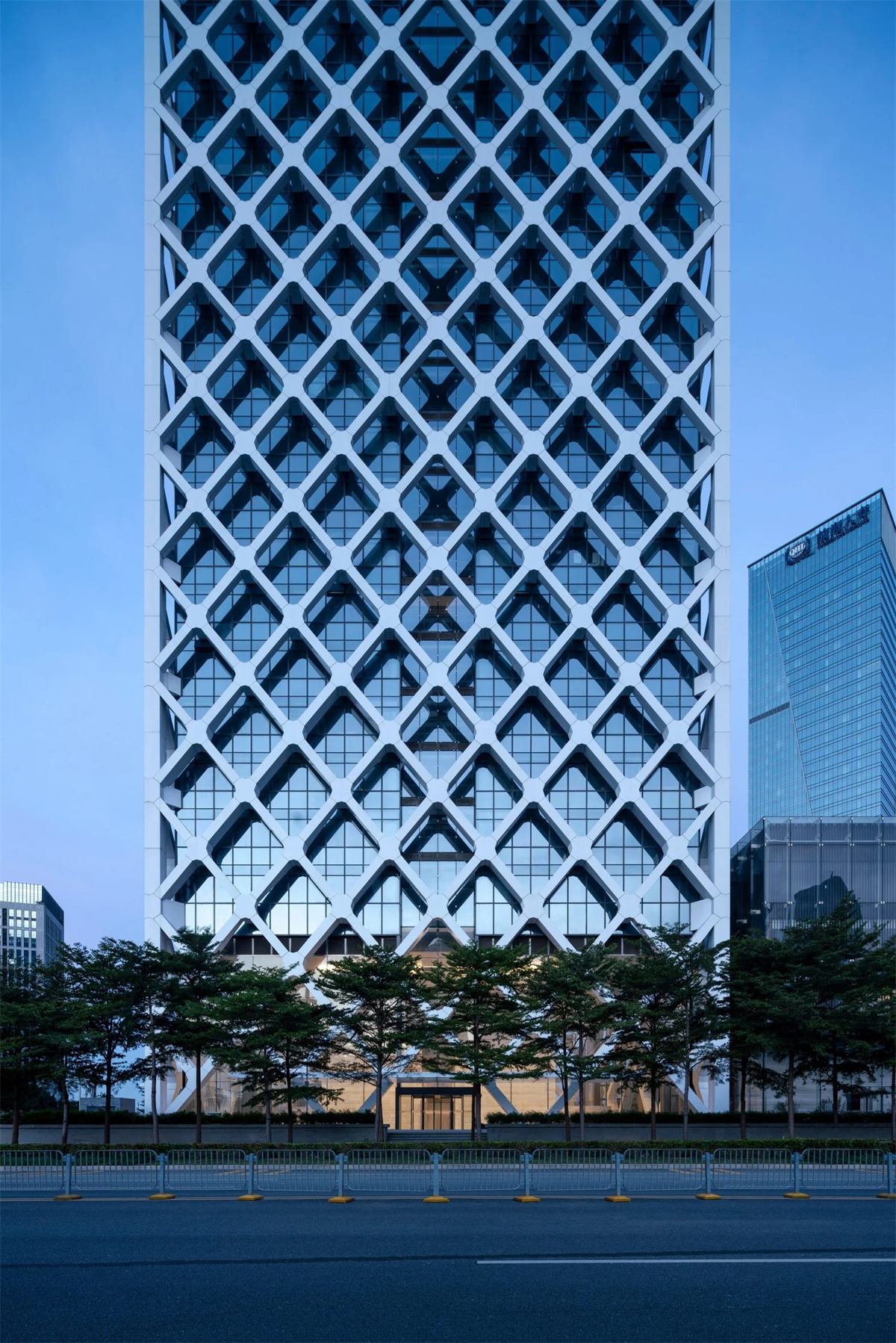
Building on SOM’s tradition of innovative engineering, the design for a bank’s new headquarters incorporates a distinctive external diagrid that significantly reduces solar gain. Inside, responsive solar shading technology and natural airflow enhance staff wellbeing.
以 SOM 的创新工程传统为基础,银行新总部的设计采用了独特的外部斜交网格,可显著降低太阳能增益。在内部,响应式遮阳技术和自然气流提高了员工的幸福感。
Skidmore, Owings & Merrill (SOM) has completed a 158-meter-tall, 33-story tower, located on the edge of a public park at the center of one of Shenzhen’s key business districts, that responds to the region’s tropical climate through a series of biophilic and sustainable design solutions. The firm was commissioned by Shenzhen Rural Commercial Bank in 2012 to design a new headquarters that balances the bank’s vision for the future alongside its history as a rural credit union.
Skidmore, Owings & Merrill (SOM) 已经完成了一座 158 米高、33 层的塔楼,位于深圳主要商业区之一中心的公共公园边缘,该塔楼采用一系列亲生物和可持续的设计解决方案。该公司于 2012 年受深圳农村商业银行委托设计一个新的总部,以平衡该银行的未来愿景和其作为农村信用合作社的历史。


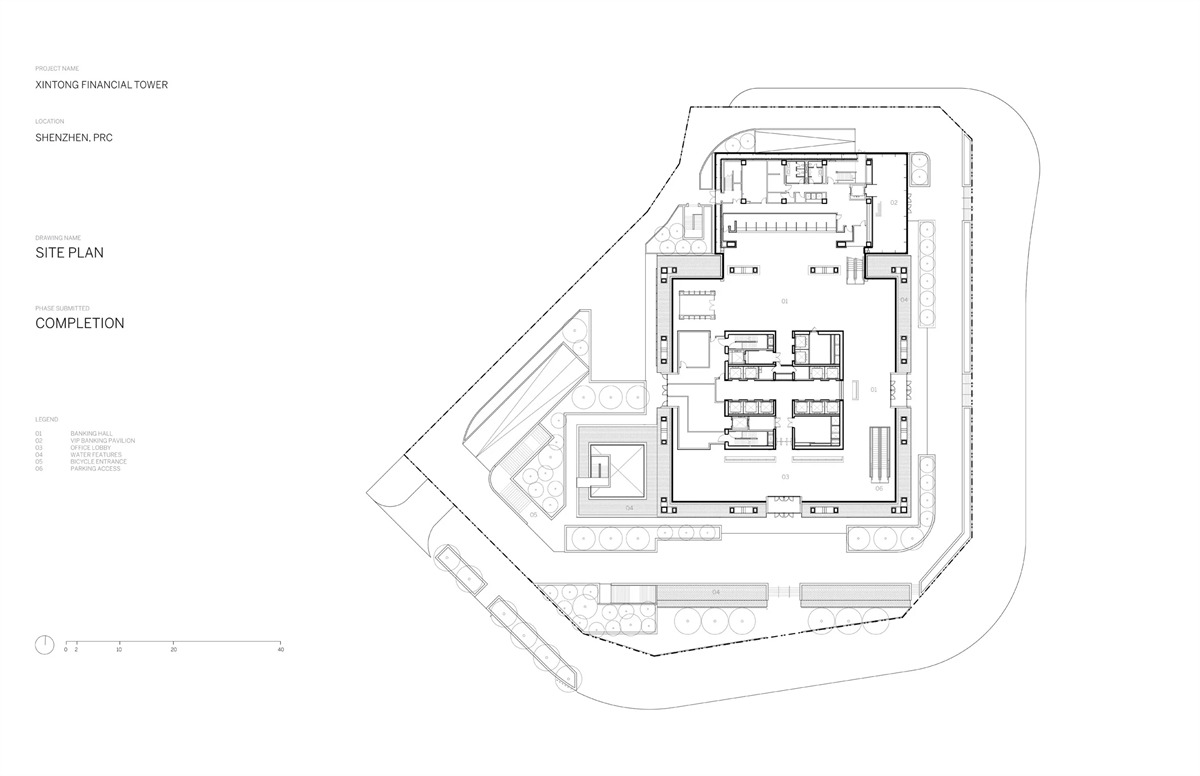
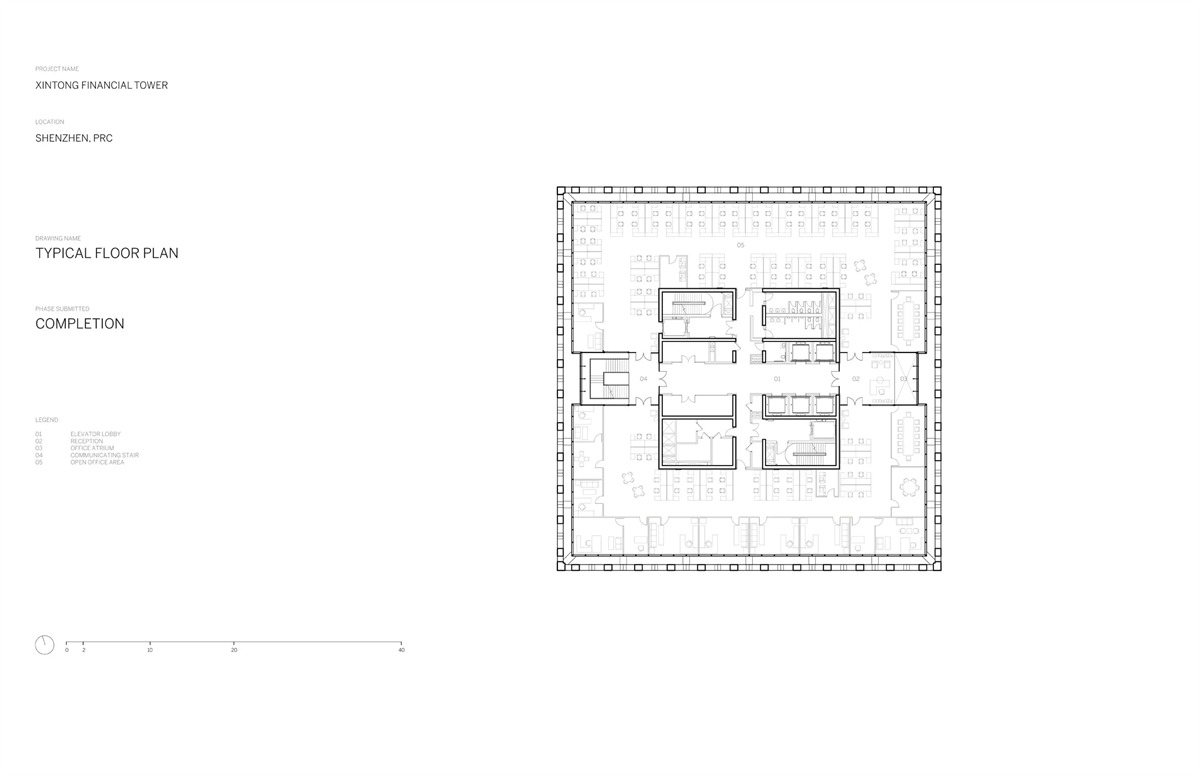

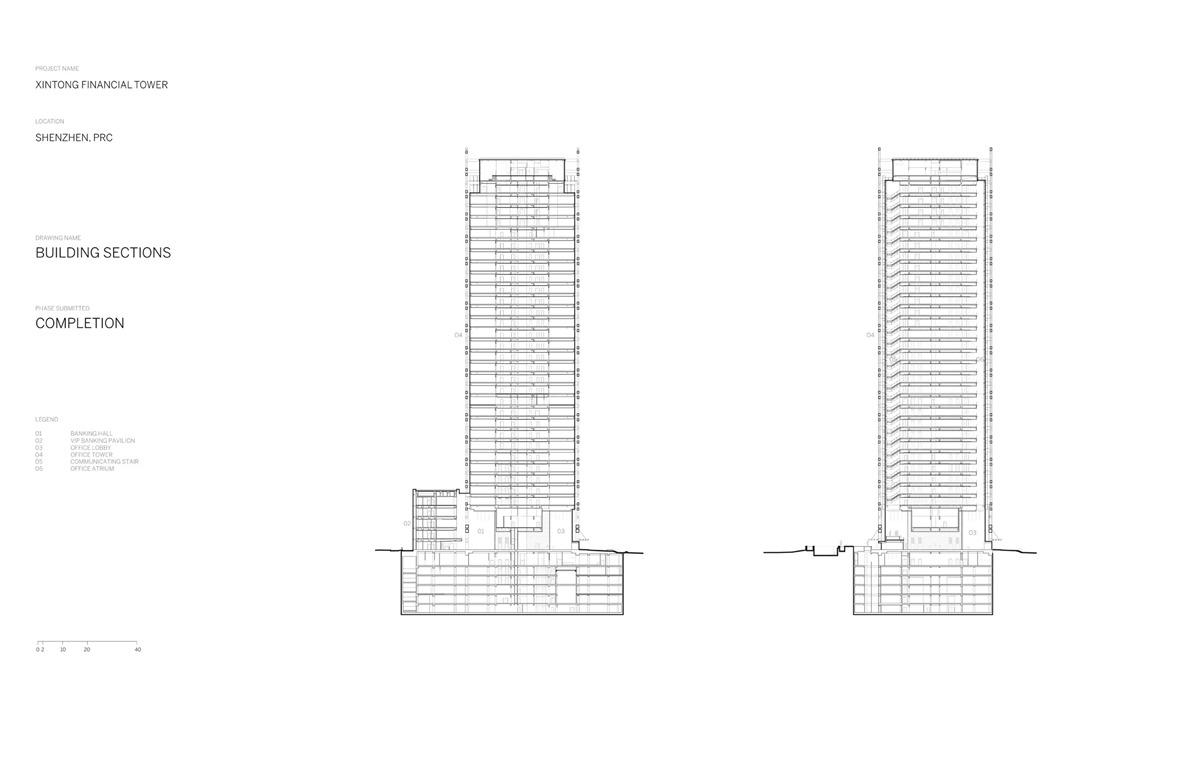
The tower’s facade is defined by an external diagrid, which serves as both the building’s structure as well as an important solar shading element. At its base, the diagrid widens to create framed openings and views to the surrounding park and Qianhai Bay, a short walk from the building.
塔的立面由外部斜肋定义,它既是建筑物的结构,也是重要的遮阳元件。在它的底部,斜交网格加宽,形成带框的开口,可以看到距离建筑物仅几步之遥的周围公园和前海湾的景色。
“We’re always exploring opportunities to synthesize inventive engineering solutions with architectural design. The Rural Commercial Bank Headquarters gave us the chance to incorporate a diagrid—similar to an exoskeleton—that pulls the structure to the exterior and effectively suspends the tower within to create column-free workspaces,” explains Scott Duncan, SOM Design Partner.
“我们一直在探索将创造性工程解决方案与建筑设计相结合的机会。 SOM 设计合伙人 Scott Duncan 解释说,农村商业银行总部让我们有机会整合一个类似于外骨骼的斜交网格,将结构拉到外部并有效地将塔悬挂在内部以创建无柱的工作空间。
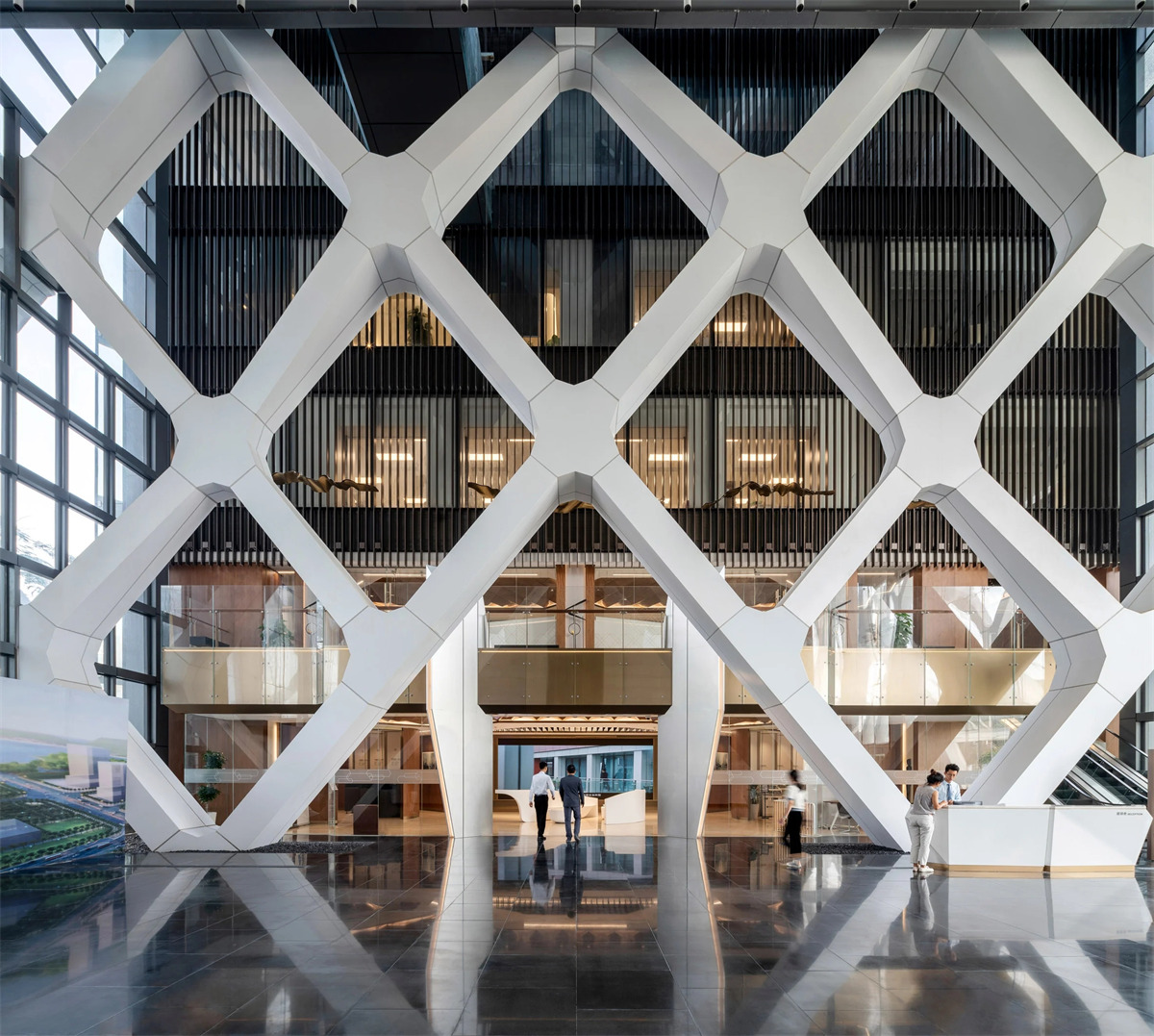
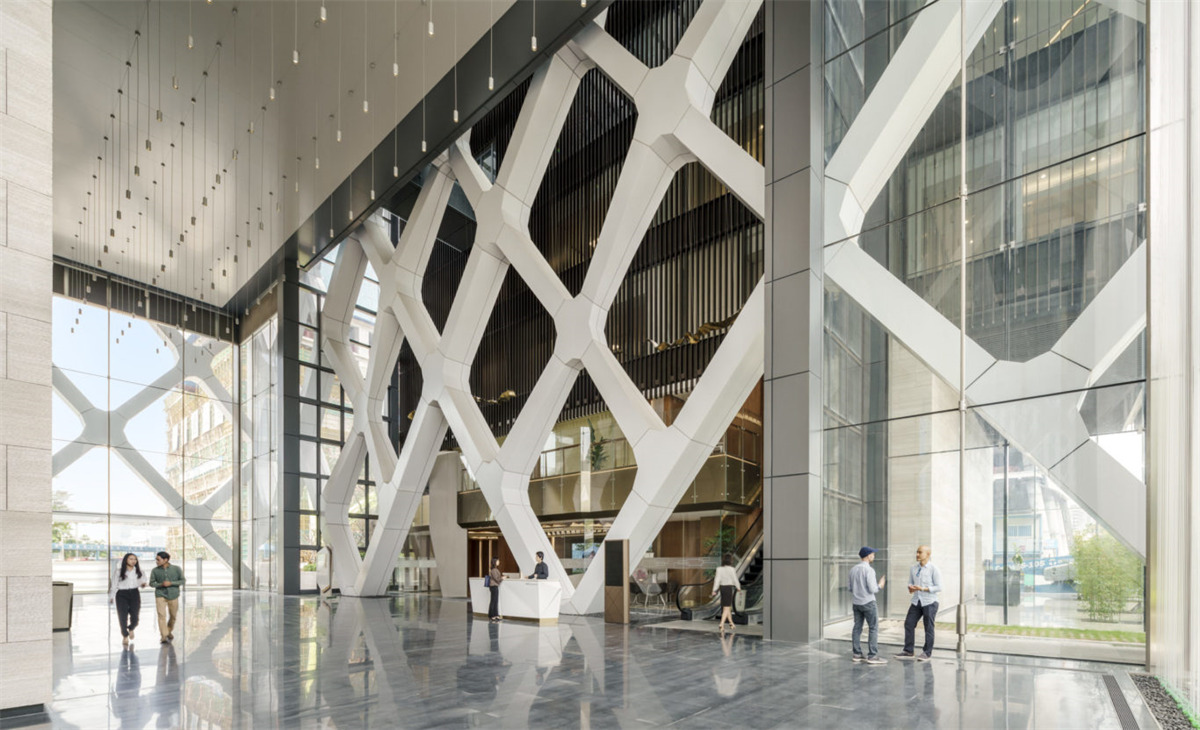
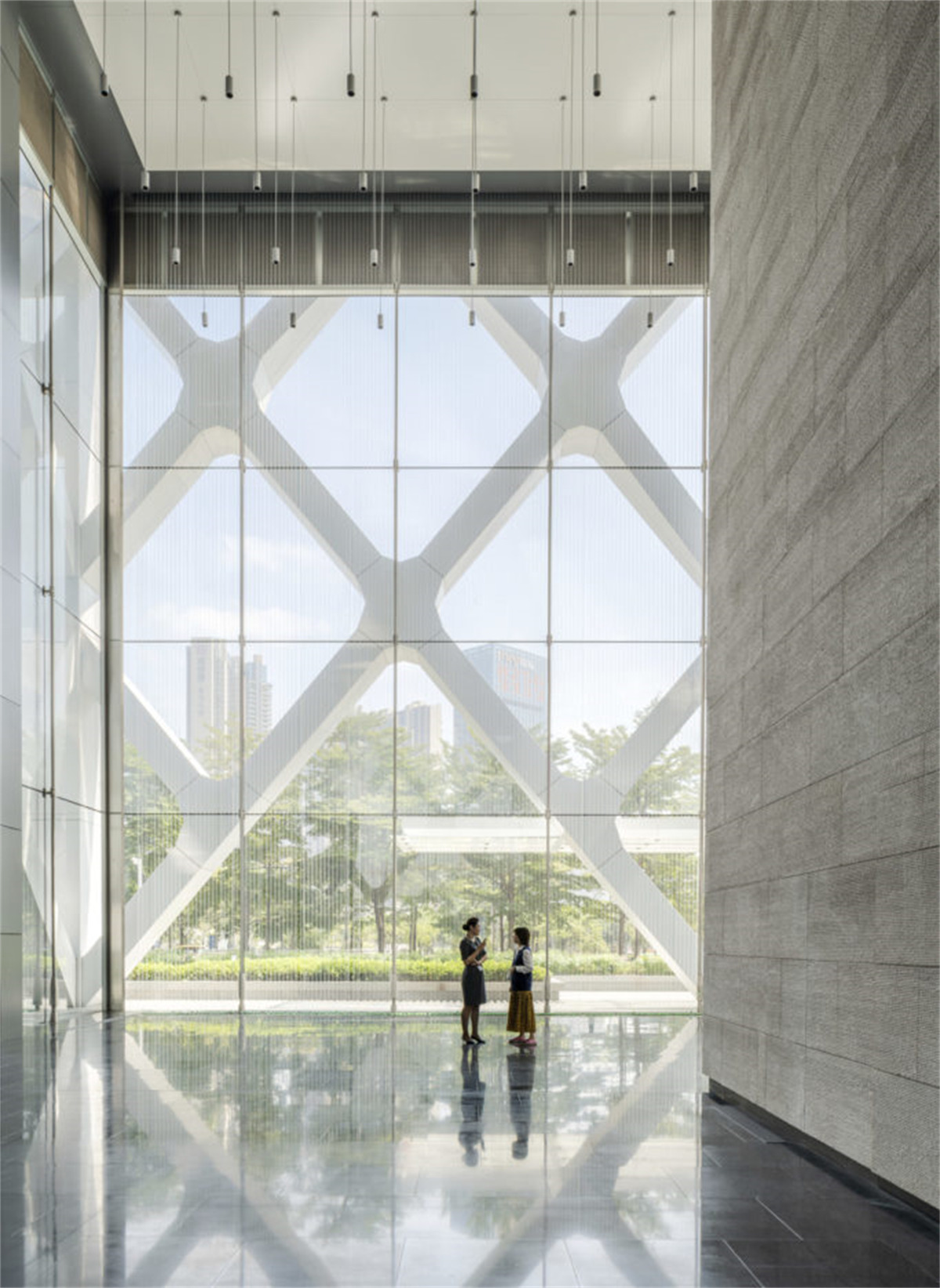
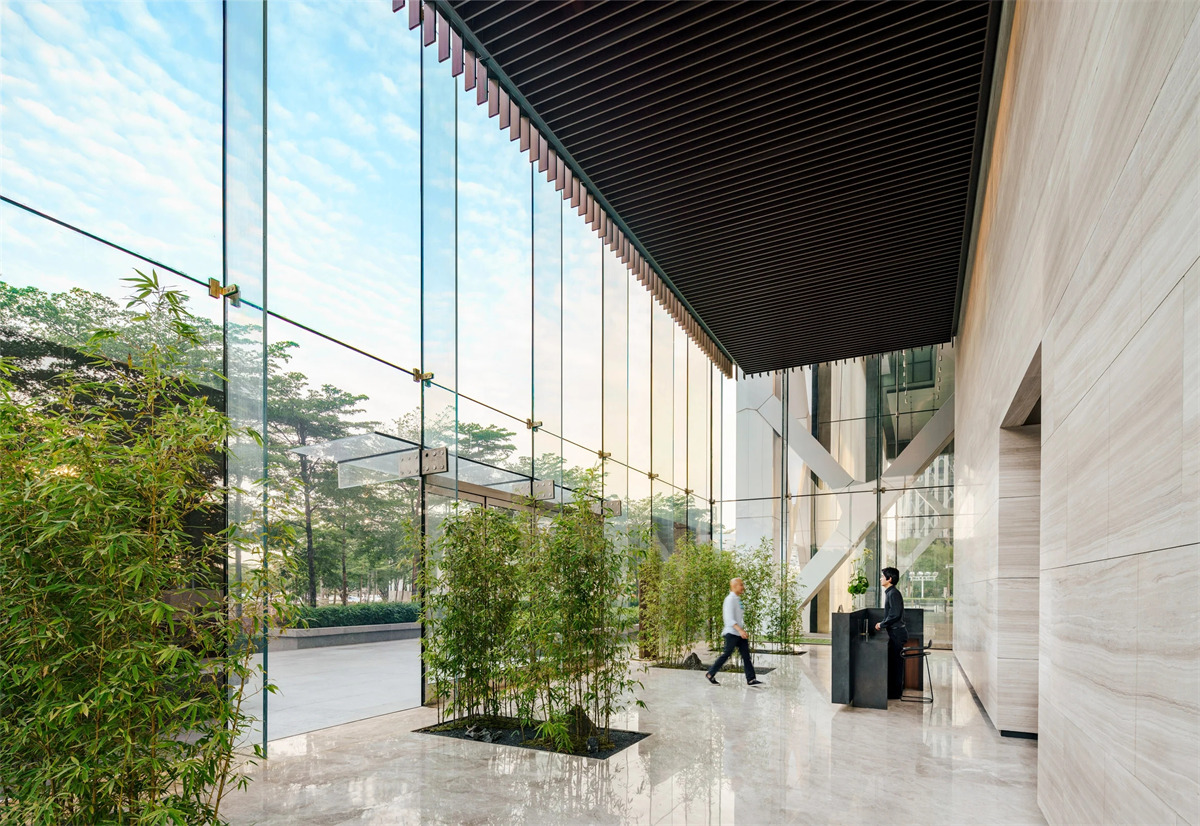
Drawing upon principles from feng shui, in which water and wealth are intrinsically linked, the lobby is encircled by a reflecting pool and features a rippling wall of water adjacent to the main entrance. A 15 meter high “rain curtain,” with droplets of water that cascade down small translucent filaments, lines the lobby’s ultra transparent glass walls. On hot summer days, these water features provide an evaporative cooling effect for the entire building. Above, suspended lighting fixtures mimic droplets of rain, and the lobby’s marble walls shift from a textured to honed finish to evoke water’s effect on stone.
大堂以水与财富的内在联系为风水原则,四周环绕着一个倒影池,并在正门附近设有一道涟漪水墙。 15 米高的“雨幕”,水滴从细小的半透明细丝上倾泻而下,排列在大堂的超透明玻璃墙上。在炎热的夏日,这些水景为整个建筑提供蒸发冷却效果。在上方,悬挂的照明设备模仿雨滴,大堂的大理石墙壁从有纹理的饰面转变为磨光饰面,以唤起水对石头的影响。
Three essential elements—earth, water and air—figure prominently in the building features, from the multistory rain curtain in the main lobby, to the striated marble cladding the tower’s elevator core, and to the natural ventilation system that brings fresh air into common areas and office spaces. Reflecting pools, grey granite paving and seating areas, and arrays of trees and ground cover define the main entrance spaces and small gardens at the base of the tower. This tactile experience at ground level transitions and becomes more atmospheric as one progresses up the tower to the open floor plans and “floating” diagrid above. At the crown of the tower, operable walls and an outdoor deck blur distinctions between indoor and outdoor spaces.
三个基本元素——土、水和空气——在建筑特色中占据突出地位,从主大堂的多层雨幕到塔楼电梯核心的条纹大理石包覆层,再到将新鲜空气带入公共区域的自然通风系统和办公空间。倒影池、灰色花岗岩铺路和休息区,以及成排的树木和地面覆盖物定义了塔底部的主要入口空间和小花园。这种在地面的触觉体验随着人们从塔楼上升到开放式平面空间和上方的“浮动”斜交网格而过渡并变得更加大气。在塔顶,可操作的墙壁和室外平台模糊了室内和室外空间之间的区别。
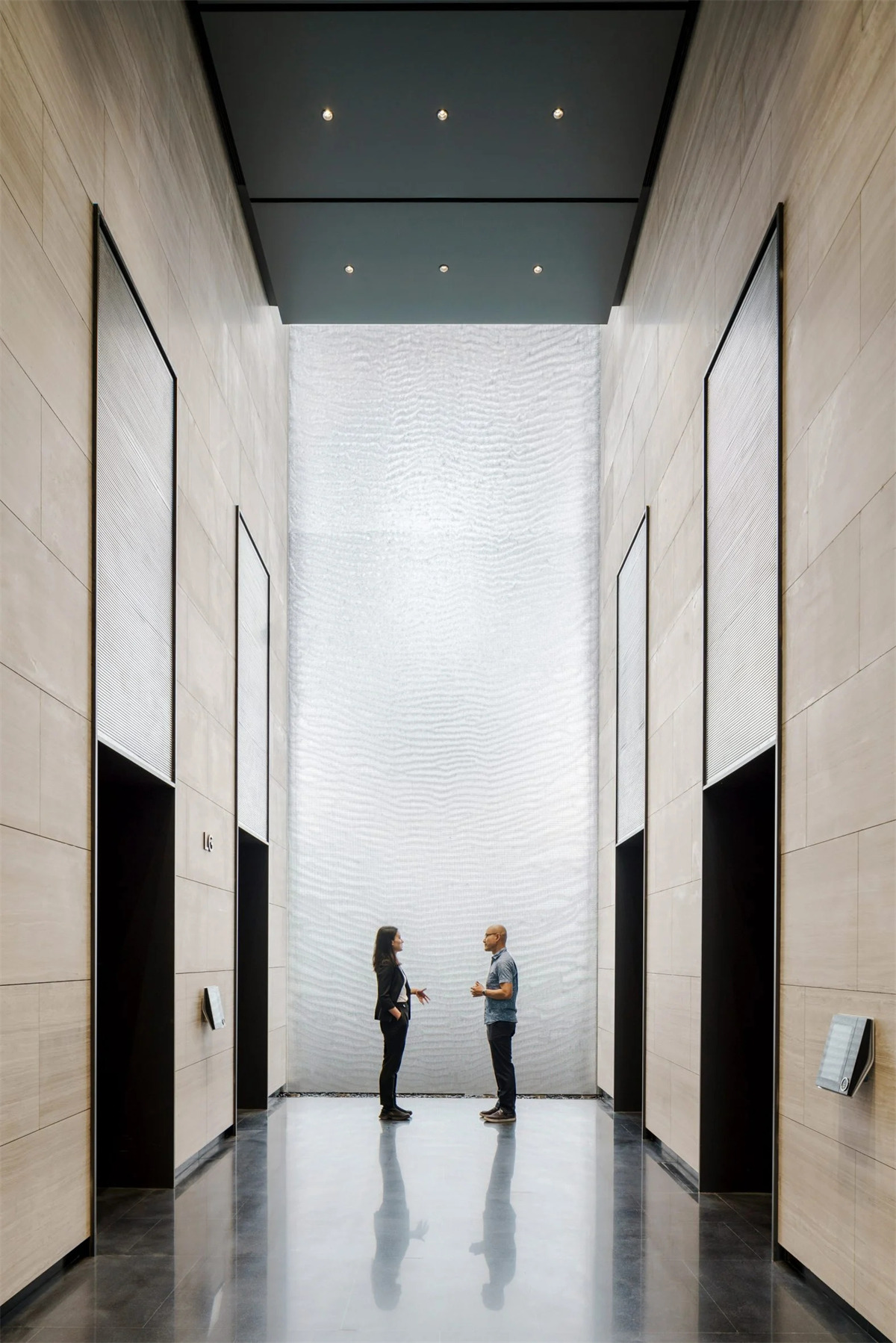
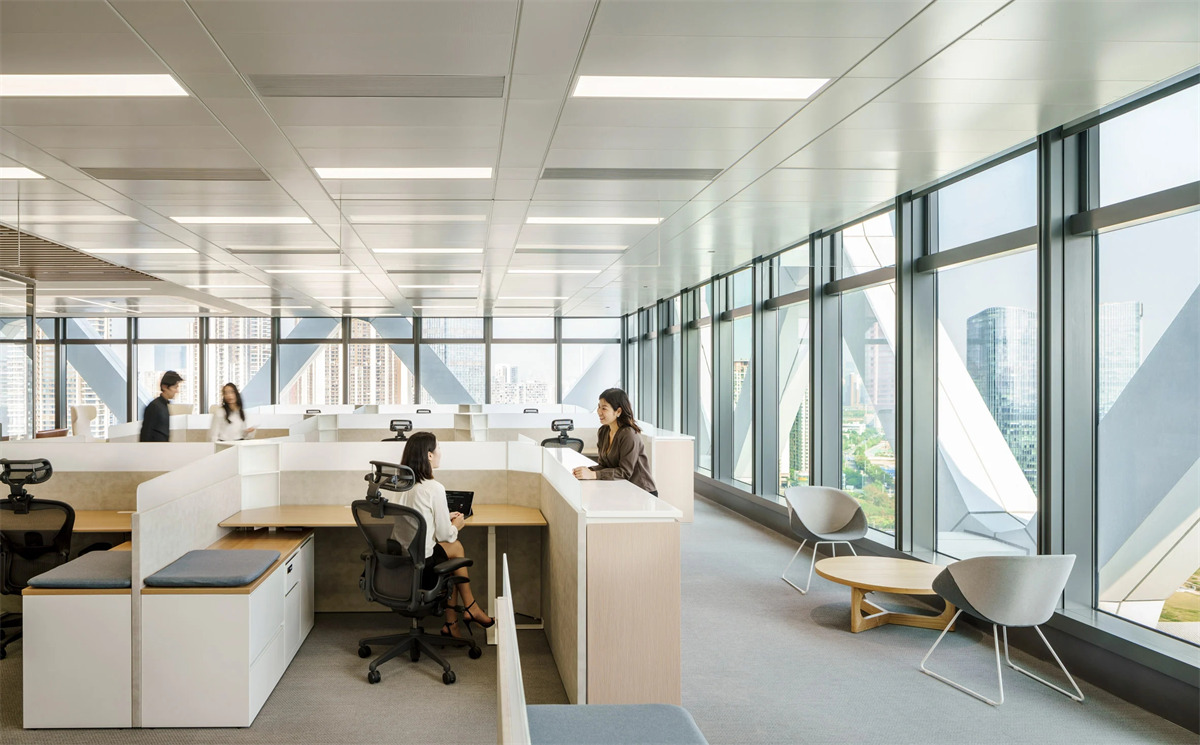
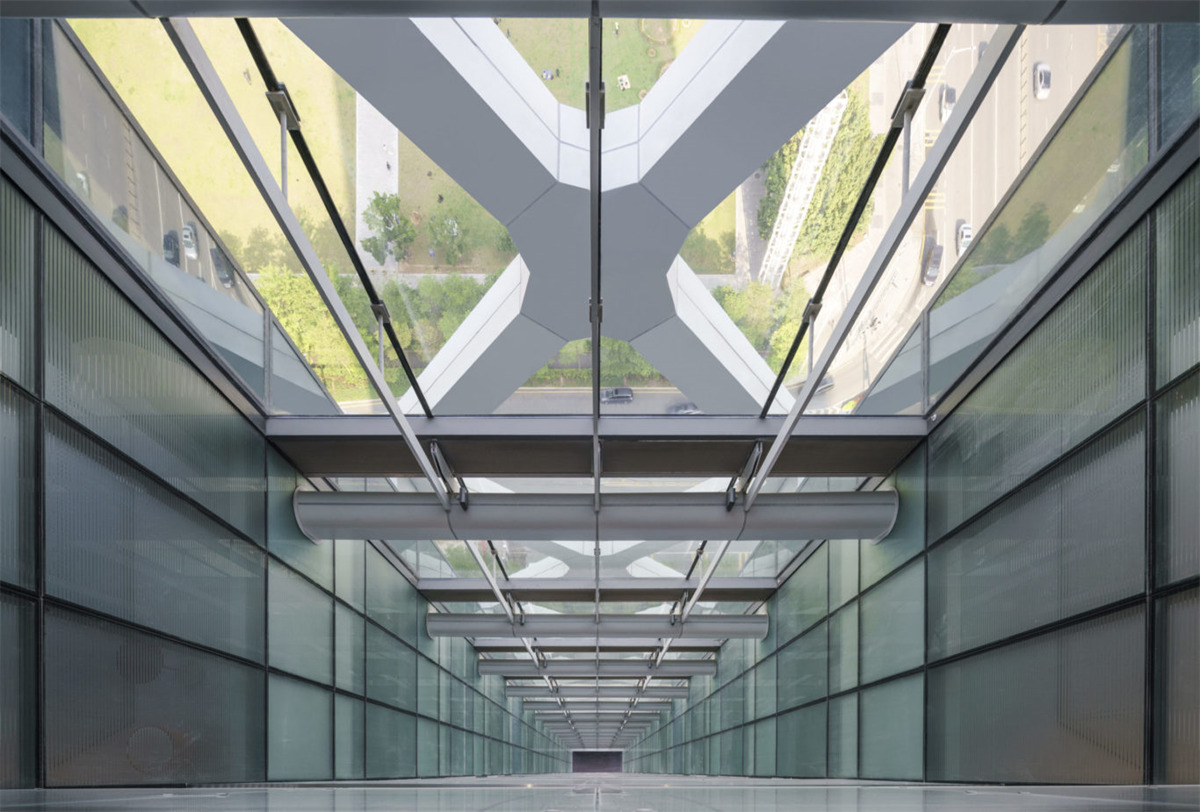
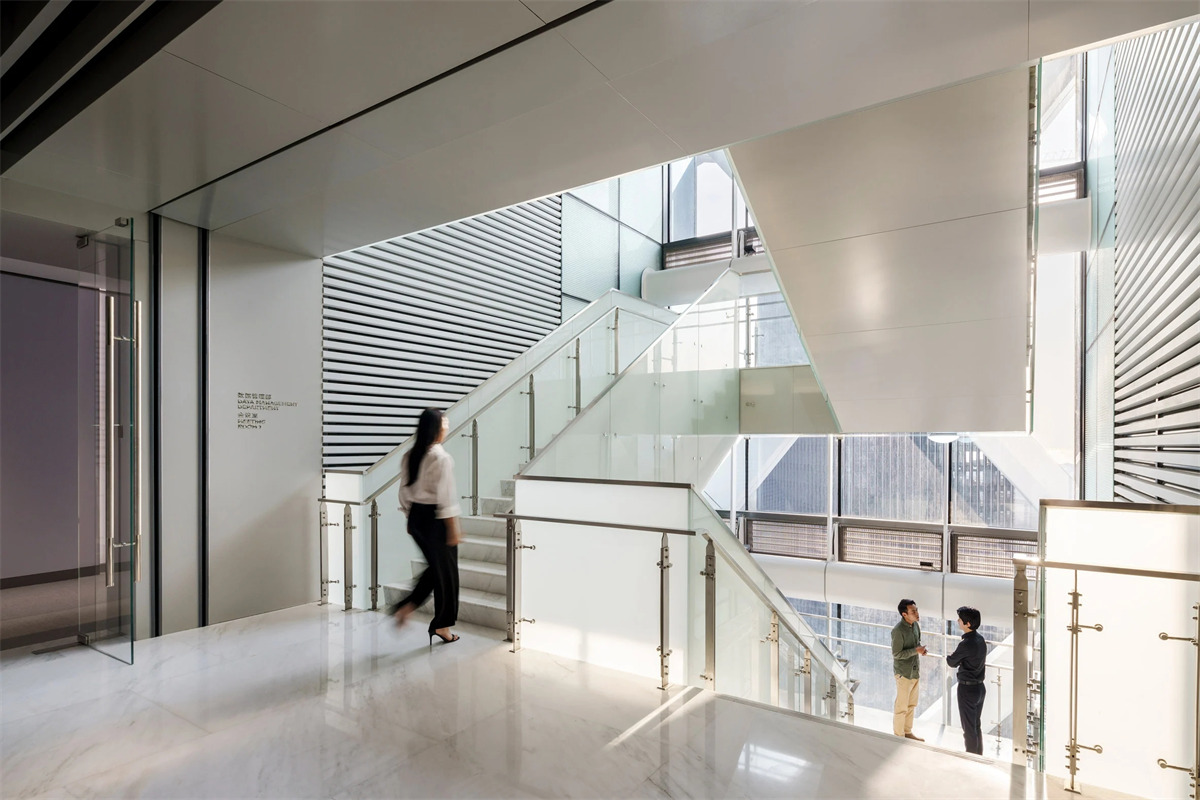
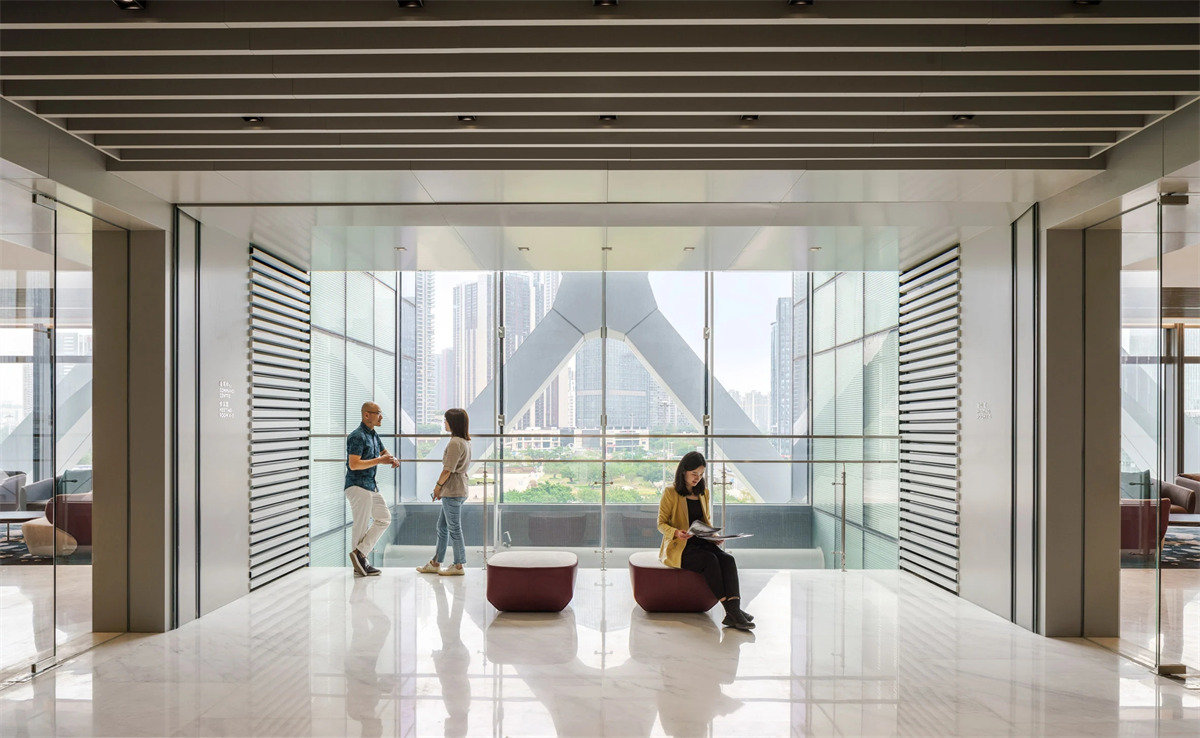
Two vertical atria span the height of the tower. On each floor, employees can use louvers to open and close vents, accessing fresh air from the atria. This allows the building to “breathe” when Shenzhen’s climate is pleasant, filling the entire building with fresh air so tenants can enjoy the same air inside as they do outside. By functioning like airways in a body and cycling fresh air throughout the building, these features generate significant savings in environmental and energy efficiency. This system prioritizes tenant comfort and wellbeing to a degree typically unheard of in office environments. Interior spaces are defined by a minimal glass perimeter wall and a daylight-responsive shading system. A communicating stairway runs the height of the tower, fostering connectivity and collaboration among coworkers.
两个垂直的中庭跨越了塔的高度。在每一层,员工都可以使用百叶窗打开和关闭通风口,从中庭获得新鲜空气。这使得大楼能够在深圳气候宜人的时候“呼吸”,让整栋大楼充满新鲜空气,让租户在室内和室外都能享受到同样的空气。通过像人体中的呼吸道一样运作并在整个建筑物中循环新鲜空气,这些功能可显着节省环境和能源效率。该系统将租户的舒适度和幸福感放在办公室环境中非常重要的地位。内部空间由最小的玻璃围墙和日光响应遮阳系统定义。一个交流的楼梯在塔的高度上运行,促进了同事之间的联系和协作。
SOM’s work on the Shenzhen Rural Commercial Bank Headquarters included architecture, mechanical, electrical and plumbing, structural and civil engineering. The tower is LEED Platinum and is targeting China Green Star certification.
SOM 在深圳农村商业银行总部的工作包括建筑、机械、电气和管道、结构和土木工程。 该塔是 LEED 白金级建筑,目标是获得中国绿色认证。

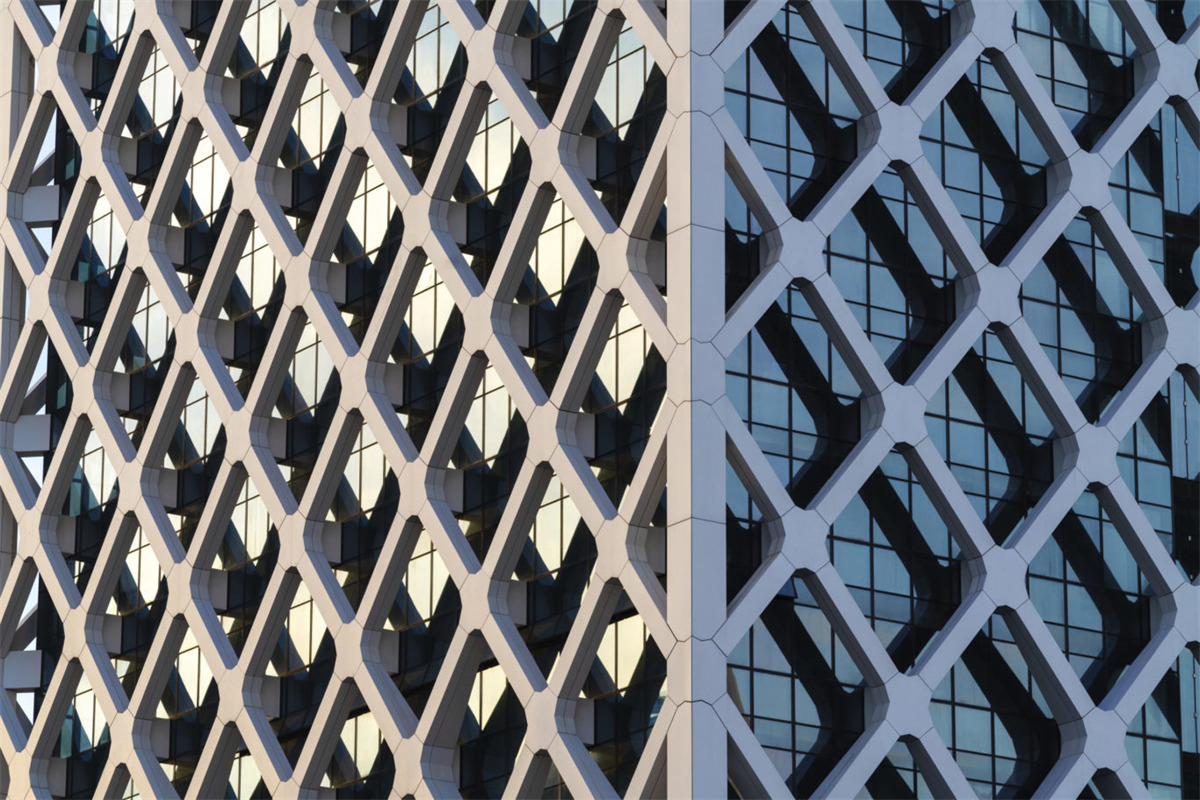
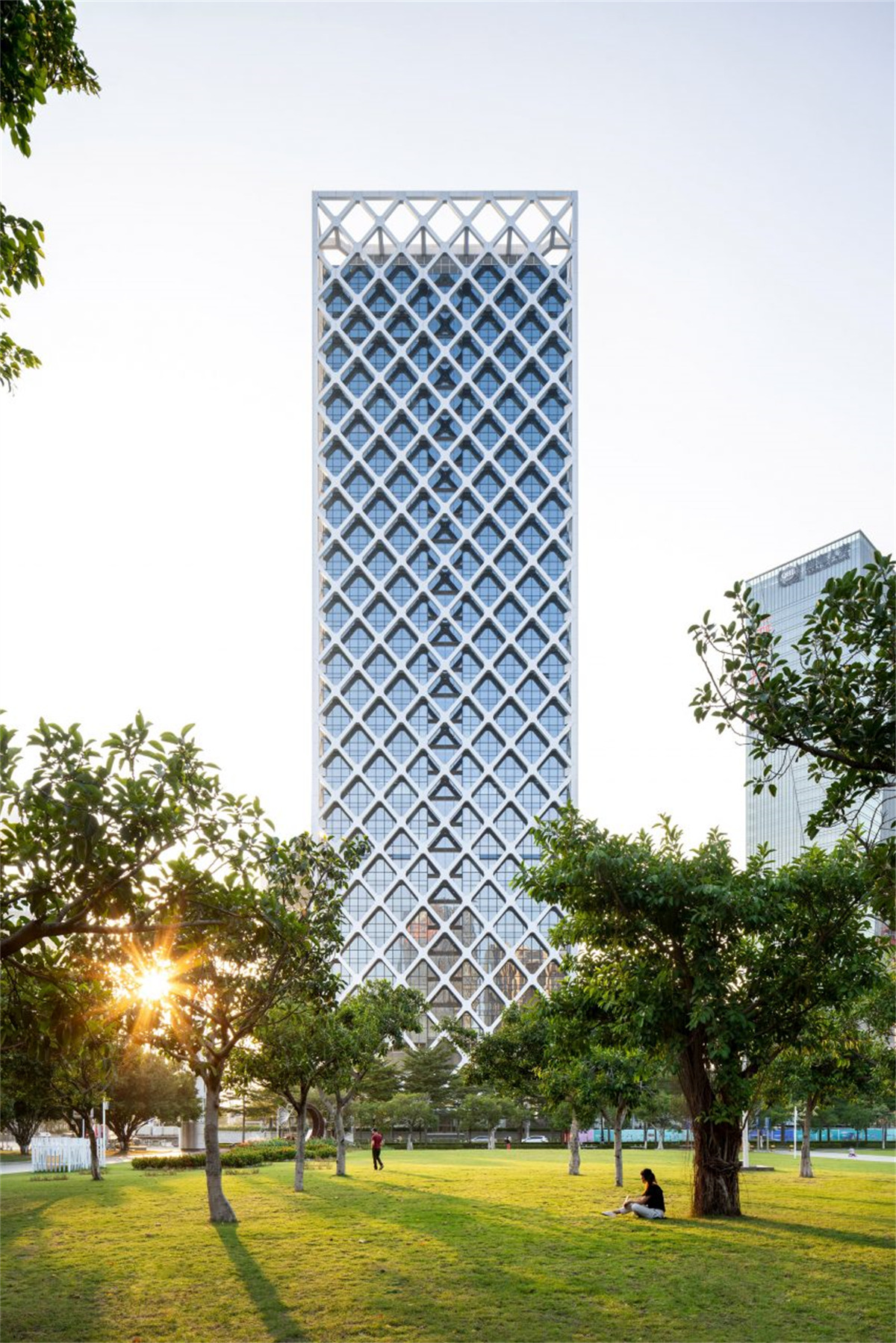
SEE MORE SOM
